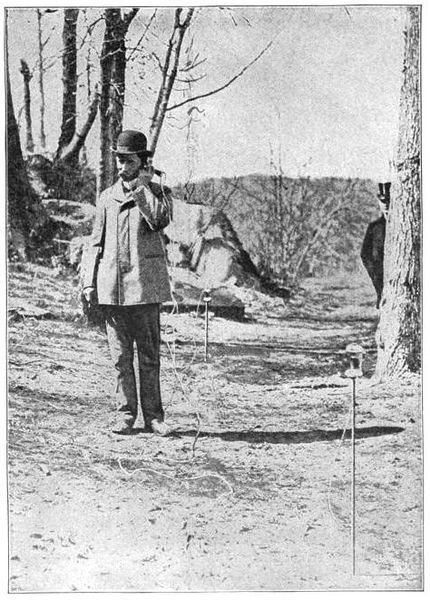Radio in the United States
Radio broadcasting has been used in the United States since the early 1920s to distribute news and entertainment to a national audience. In 1923, 1 percent of U.S. households owned at least one radio receiver, while a majority did by 1931 and 75 percent did by 1937. It was the first electronic "mass medium" technology, and its introduction, along with the subsequent development of sound films, ended the print monopoly of mass media. During the Golden Age of Radio it had a major cultural and financial impact on the country. However, the rise of television broadcasting in the 1950s relegated radio to a secondary status, as much of its programming and audience shifted to the new "sight joined with sound" service.
In 1902 Nathan Stubblefield demonstrated "ground-conduction" wireless but was unable to achieve practical distances.
The New Jersey Telephone Herald provided news and entertainment to Newark, New Jersey over telephone lines from 1911 to 1912.
Alternator transmitter demonstrated by Reginald Fessenden at Brant Rock, Massachusetts in December 1906. He later reported that he subsequently made general broadcasts on Christmas Eve and New Year's Eve.
Lee de Forest made a series of broadcasting demonstrations from 1907 to 1910. On February 24, 1910 Mariette Mazarin sang from his New York City laboratory.
Mass media in the United States
There are several types of mass media in the United States: television, radio, cinema, newspapers, magazines, and web sites. The U.S. also has a strong music industry. New York City, Manhattan in particular, and to a lesser extent Los Angeles, are considered the epicenters of U.S. media.
People using smartphones, devices associated with young people, but commonly used by people of all ages
The New York Times Building in Times Square, Midtown Manhattan
The Washington Post on Monday, July 21, 1969, stating "'The Eagle Has Landed'—Two Men Walk on the Moon".
The first issue of Time (March 3, 1923), featuring Speaker Joseph G. Cannon.








